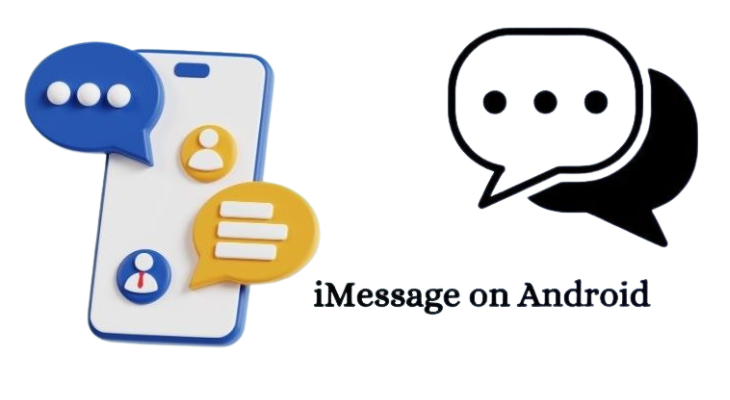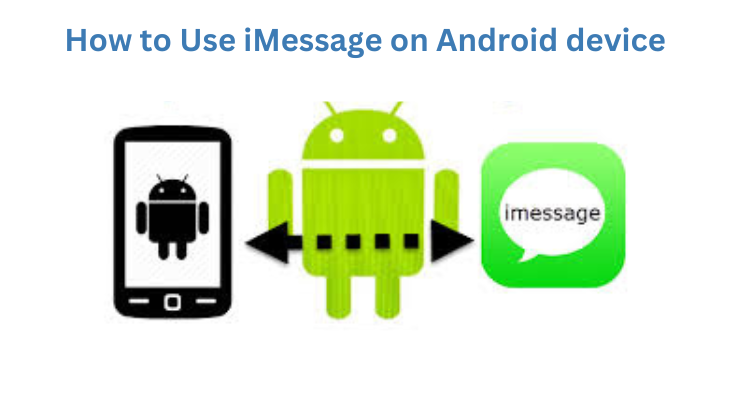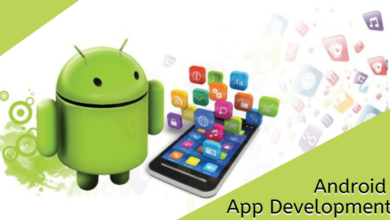Apple Shuts Down App That’s Brought iMessage on Android

Apple no longer maintains Beeper Mini! Yes, Apple’s action has prevented the new software that changed green bubbles to blue from functioning at this time. We tested Beeper Mini last week and it basically introduced iMessage to Android, and it performed really well. But it appears that Apple does not want iMessage to be available on Android, as was to be expected.
Beeper Mini customers, who pay $1.99 a month, flocked to Reddit over the weekend to report that their app was no longer functional. The error message that the users saw was, “Lookup request timed out: failed to lookup on server.” When I attempt to send a message using my own Beeper Mini app, the same problem code appears.
Addressing an outage on the Beeper Mini side, a corporate representative replied on the Reddit topic. aware of it and actively attempting to resolve it. Additionally, the firm handle posted anything on X.
It appears that the developers have some thoughts about how to restore the iMessage feature on Android, since they tweeted yesterday that they are still working on a solution.
Table of Contents
ToggleIt’s Clearly Apple’s Will Not Allow iMessage on Android!
Apple has disabled the Beeper Mini’s operational mechanisms. Last week, Beeper Mini made its debut as an Android software that mimicked iMessage and had end-to-end encryption, just like the iPhone.
It’s uncertain when or if Beeper Mini will function again, but there is some hope that it will. Apple’s position on this app is rather clear. Apple’s Senior PR Manager Nadine Haija said, “At Apple, we build our products and services with industry-leading privacy and security technologies,” in a statement provided to The Verge.
Apple went on to basically say that Beeper didn’t live up to this requirement. “[Apple] blocked methods that use fictitious credentials to access iMessage in an effort to safeguard our users.”
Furthermore, Apple went on to say that employing Beeper Mini’s methods could raise the possibility of “metadata exposure” and, well, lead to more “unwanted messages, spam, and phishing attacks.” All things considered, Apple has closed Beeper Mini and even damaged their reputation.
The question of which side should be favored is hotly contested. Senator Elizabeth Warren from the US criticized Apple on X, claiming that “big tech executives are squashing competitors in order to protect profits.” Still, for a few days, iMessage worked seamlessly across platforms and had excellent functionality!
Beebom’s Opinion: Is It Appropriate to Allow iMessage for Android?
There should undoubtedly be an Android version of iMessage in the future. Green and blue bubbles will once again be friends after it materializes. As the US Senator phrased it, cross-platform texting will be “easy and secure.” On the other hand, I don’t believe Apple wants iMessage available on Android.
While developers like Beeper and Nothing & Sunbird’s prior effort with the Chats app might keep attempting to port iMessage to Android, Apple might continue to stifle fresh initiatives.
All things considered, iMessage is a major selling feature for Apple products, particularly in the US. Apple intends to prevent iMessage from running on other systems in order to safeguard this USP. This causes a few problems for the customer, thus it’s unlikely that iMessage will be released for Android until Apple is compelled to.
RCS texting is the only option available to the rest of the world as of right now, notwithstanding Apple’s outreach to Android users. This will result in somewhat safer and better messaging between iOS and Android. To set them apart from iMessage on the iPhone, these messages will nevertheless continue to be displayed in green, in typical Apple way.
Perhaps in the future, Apple will provide a premium version of the official iMessage software for Android so that users can continue in group conversations without fear of ridicule for their messages’ unusual colors.fd.fccccc
How to Use iMessage on Android device

While iMessage is an Apple-exclusive service, there are a couple of workarounds you can try to access its features on your Android device:
1.Using a third-party app:
- Beeper: This app acts as a universal chat platform, allowing you to consolidate your messaging from various services, including iMessage, into one interface. Beeper offers a free tier with limited features, and paid plans for extended functionality.
- AirMessage: This open-source solution leverages a Mac computer as a bridge to send and receive iMessages on your Android phone. It requires some technical setup but offers a more cost-effective option compared to Beeper.
2.Convincing your iPhone friends to switch to a cross-platform messaging app:
- WhatsApp: A widely used and feature-rich messaging app available for both Android and iOS.
- Signal: A privacy-focused messaging app with end-to-end encryption, also available on both platforms.
- Telegram: Another feature-packed option with group chat capabilities, channels, and bots, available for Android and iOS.
Things to keep in mind:
- Using third-party apps may involve fees or limitations compared to the native iMessage experience.
- Convincing your friends to switch messaging apps might require some effort.
Consider factors like cost, technical complexity, and your friends’ communication habits before making a decision.
Apple responds with regard to the Beeper iMessage saga
A few days after the Beeper team proudly disclosed a way for users to send blue-bubble iMessages directly from their Android phones without the use of weird relay servers, and about a day after it became clear Apple had taken action to shut that down, Apple has offered their perspective on the matter.
The firm takes an expected stance on this issue, saying that it is only working to protect consumers’ rights and ensure the security and privacy of their iMessages.
This assertion draws multiple conclusions. First off, it should be mentioned that Beeper Mini has actually been discontinued by Apple. Beeper is a custom created service that connects to iMessage through Apple’s own push notification system, intercepting and sending iMessage messages to your smartphone. To do this, Beeper needed to convince Apple’s servers that it was pinging the notification protocols from an actual Apple device—even if it was obviously not. What Apple refers to as “fake credentials” are these. Quinn Nelson of Snazzy Labs created a great video that walks viewers through the entire process.)
As per Beeper’s literature, your privacy and encryption are protected by the company’s process, meaning that only you can view the contents of your messages. Apple cannot verify its assertions that it puts users and the people they speak with at danger.
But clearly, there’s a far bigger picture at work here as well. Apple has repeatedly declared that it does not plan to introduce iMessage to Android: CEO Tim Cook said, “Buy your mom an iPhone,” in response to a questioner at the Code Conference who wanted a better method to communicate with their mother, who uses an Android phone.
Officials from the corporation had previously talked about Android versions but came to the conclusion that it would eat into iPhone sales. Although the specifics of Apple’s cross-platform RCS messaging protocol implementation are yet unknown, you can be sure that the company will keep working to enhance the native iMessage user experience. According to Apple, it will.
It’s interesting how timely Apple made this comment. That being said, security-wise, Beeper’s previous attempts to intercept iMessage were really far more problematic because it has only been in existence for a few years. Because Beeper and apps like Sunbird (which just partnered with Nothing on another way to bring iMessage to Android) were only routing your iMessage traffic through a Mac Mini housed in a server rack, your discussions were noticeably more public. But because Beeper Mini was directly abusing the iMessage protocol, Apple tightened up its security procedures.
Since Apple unplugged Beeper Mini, Beeper has been working tirelessly to get it operational again. The company reported that on Saturday, Beeper Mini remained unusable, but iMessage was operational within the Beeper Cloud app. He said he didn’t understand Apple’s decision to remove his app.
Migicovsky now asserts that his stance hasn’t changed in light of Apple’s statement. He says he would be happy to submit Beeper’s code for a security evaluation so Apple may be confident in its security protocols. Then he stops himself. But I have issue with the notion as a whole! Since unencrypted texts are the sole means of communication available to users of iPhones and Android devices, let’s start there.
Beeper contends that since SMS is inherently unsafe, anything else would be preferable. Migicovsky pauses to examine my hypothesis that Beeper, a firm they are unaware of, is receiving apparently exclusive blue-bubble messages from iPhone users, a possibility that Apple may be concerned about. “That’s fair,” he replies, offering a potential solution: maybe each message sent using Beeper should start with a pager emoji to inform recipients of what’s going on. If it resolves the problem, he says, it might be completed in a few hours.
When I ask Migicovsky whether he’s prepared to take on Apple’s security team moving ahead, he says that Beeper Cloud’s continuous operation shows that Apple can’t or won’t keep it out of the system permanently. (He adds that there are still some ideas the Beeper team has for the Beeper Mini.) Beyond that, he thinks the court of public opinion will finally convince Apple to collaborate. “Almost everyone can agree that it should exist.”
At the very least, it seems likely that Apple will overlook this point. The company is unlikely to give up control over iMessage at this point because it has been closely observing and protecting it for years. Furthermore, even if Beeper is able to restart Beeper Mini, it will constantly be caught in a never-ending game of cat and mouse as it tries to circumvent Apple’s security protocols. Regardless of your desire to send iMessages from an Android phone, Apple has made it clear that it wants to dominate that market.
Conclusion
The Beeper Mini shutdown may have silenced its blue whispers, but the conversation it ignited about cross-platform messaging must continue. Let’s keep asking questions, demanding innovation, and advocating for a future where green and blue bubbles are simply emoji options, not barriers to connection. In this future, communication will flow freely, driven by choice, convenience, and the human desire to connect, regardless of the color of our message bubbles.
FAQs
So, Beeper Mini is dead? Dead and buried?
Not quite! While the app is currently down, the Beeper team is working on a fix and might have a solution soon. It’s like that friend who accidentally tripped and spilled your smoothie, but is already scrambling to grab some napkins and apologize profusely.
Okay, but if Beeper Mini doesn’t come back, what do I do with all my messages?
Hold your horses! The Beeper folks are figuring out ways to help you migrate your message history and data to other platforms. Think of it as packing your digital suitcase before checking out of the Beeper Mini hotel.
Besides Beeper Mini, are there any other iMessage-friendly options for Android users?
Absolutely! While you won’t get the full, blue-bubbled shebang, alternatives like Signal, Telegram, and even Facebook Messenger can handle cross-platform messaging pretty darn well. They’re like the friendly neighbors who welcome you with open arms (and green bubbles) into their messaging world
Wait, is Apple just being a jealous bully with this whole iMessage thing?
That’s a juicy question! Some folks definitely think so, arguing that Apple wants to keep its users locked in its walled garden. Others see it as a security measure, like that vigilant guard at the castle protecting the king’s precious iMessage jewels.
Is there any hope for a future where green and blue bubbles coexist peacefully?
Ah, the utopian dream! The good news is that standards like RCS are on the horizon, aiming to create a world where everyone can chat regardless of their phone brand. Think of it as a universal messaging translator, breaking down the language barrier between green and blue.
Will Beeper Mini ever rise from the ashes like a messaging phoenix?
Only time will tell! But one thing’s for sure: the saga of Beeper Mini has sparked a conversation about cross-platform messaging and user choice. So, keep the questions coming, keep pushing for communication without borders, and who knows, maybe one day, green and blue bubbles will be just a fun emoji choice, not a symbol of messaging inequality.




